Tackling climate change with gas-guzzling microbes
Climate change, and its catastrophic effects on the world, are gathering pace. Even if we completely stopped emitting greenhouse gases tomorrow, the world would continue warming. As such, there is a critical need to remove carbon dioxide and other greenhouse gases from the atmosphere – and some very special microbes might hold the key. Professor Esteban Marcellin from the University of Queensland and Professor Chris Greening and Dr Leonie van ‘t Hag from Monash University in Australia work together at the RECARB Hub, where they are using microbes to convert gases into protein through the process of bioconversion.
Talk like a … bioconversion researcher
Bioconversion — using biological processes or agents to convert materials into useful products or energy sources
Biotechnology — the application of science and technology to living organisms
Gas fermentation — the conversion of gases into valuable products by microbes
Greenhouse gas — a gas that contributes to global warming and therefore climate change
Microbe — a microorganism such as a bacterium
Synthetic biology — using bioengineering techniques to redesign organisms for useful purposes
The release of greenhouse gases from human activities, such as fossil fuel combustion and agriculture, is rapidly warming the planet and contributing to catastrophic and accelerating climate change. Around the world, many research projects are attempting to prevent the emission of further greenhouse gases. However, this will not be sufficient to stop climate change. Even if we could stop all greenhouse gas emissions tomorrow, our planet would continue to warm due to the gases already in the atmosphere.
In light of this, many climate change mitigation projects now focus on removing greenhouse gases from the atmosphere. There are lots of ways to do this: from natural methods, such as planting trees and mangrove forests, to industrial methods, such as direct air capture which aims to extract carbon dioxide from the air and utilise or store it out of harm’s way. While many of these methods have potential, none are universally applicable, and there is a lot more work needed to find viable, scalable solutions.
The ARC Research Hub for Carbon Utilisation and Recycling (RECARB hub) at Monash University is a collaborative research group that aims to develop technologies that transform carbon dioxide emissions into useful products. For example, Professor Esteban Marcellin from the University of Queensland and Professor Chris Greening and Dr Leonie van ‘t Hag from Monash University are using bioengineered microbes to convert carbon dioxide emissions into products such as animal feed and plastic replacements through a process known as bioconversion.
Introducing the air eaters
“My group’s biggest discovery is that microbes can literally live on air,” says Chris. “When starved for their preferred organic foods, microbes can take up tiny amounts of gaseous energy sources from the atmosphere.” The team is investigating this phenomenon at every scale: from the enzymes that power the process, to the significance of these microbes within ecosystems. “Some ecosystems, like those on the Antarctic continent, are primarily powered by these microbes that use gas as an energy source,” explains Chris. “On top of this, these microbes remove around 350 million tonnes of greenhouse gas from the atmosphere every year, mitigating climate change and air pollution.”
The team wants to harness this natural process at scale by cultivating gas-eating microbes in bioreactors. “Through the process of gas fermentation, these microbes convert gases such as carbon dioxide, carbon monoxide, methane and hydrogen into useful products such as fuels, chemicals or proteins,” explains Esteban. “This approach reduces greenhouse gas emissions by capturing climate-active gases before they enter the atmosphere, removing emissions that have already been released and replacing fossil fuel-based production methods.”
Producing proteins
Using gas fermentation, it could be possible to reduce the negative impacts of agriculture on our climate. “For example, as our microbes grow, they accumulate protein-rich biomass, which is known as ‘single-cell protein’,” says Esteban. “After harvesting and drying, this biomass can be used as a sustainable protein source for animal feed or even human food.” Unlike traditional food production methods, this technique does not require large amounts of land, soil or water.
Single-cell protein products are nothing new. Various meat substitute products are made from mycoprotein, a fungus grown in bioreactors. And, love them or loathe them, some breakfast spreads, such as Marmite and Vegemite, are made from recycled brewing yeast, while the bacterium Spirulina has become a staple of health food stores and smoothies. “Our method differs from others in that it uses waste gases as its primary input, rather than other nutrient sources,” explains Leonie. “This makes it an integrated approach. Not only does it reduce greenhouse gases in the atmosphere, but it also produces useful proteins with minimal energy and material inputs.” Other waste products, such as food waste, also provide excellent feedstock for these bacteria. “Bacteria can convert the starch in food waste into proteins, plastics or biofuels,” says Leonie. “This diverts food waste from landfill, where it would degrade and act as a source of greenhouse gas.”
Reference
https://doi.org/10.33424/FUTURUM641
Synthetic biology and global challenges
Producing single-cell protein is not the team’s only aim. Esteban, Chris and Leonie are also using synthetic biology to create microbes that can convert greenhouse gases into products that would not be produced naturally. “By introducing new metabolic pathways, optimising gene expression and rewiring gene regulation, we can redirect microbes away from cell growth and towards the production of fuels or chemicals,” says Esteban. “This allows us to transform microbes into efficient cell factories that convert greenhouse gases into valuable commodities.” By providing fuels and chemicals that would normally be produced through the extraction or combustion of fossil fuels, the team is helping support both climate goals and industrial needs.
The work of the RECARB Hub addresses multiple societal challenges at once: climate change, food security and industrial demands. “Natural microbes are already removing millions of tonnes of greenhouse gases from the atmosphere every year, supporting ecosystem productivity and resilience,” says Chris. “By learning from and harnessing both natural and engineered microbes, we can create a circular system that recycles waste gases into nutritious food, degradable bioplastics and future fuels.”
 Professor Esteban Marcellin
Professor Esteban Marcellin
Fields of research: Bioconversion, synthetic biology
The University of Queensland, Australia
Professor Chris Greening
Fields of research: Bioconversion, microbiology, biochemistry
Dr Leonie van ‘t Hag
Fields of research: Bioconversion, sustainable processing, biomaterials
Monash University, Australia
Research project: Using specialised microbes to transform gases into useful proteins via bioconversion
Funder: Australian Research Council (ARC); industry partners
About bioconversion
Bioconversion involves using biological processes to transform matter into useful products or energy sources. “Bioconversion is exciting because it offers real solutions to climate change and resource scarcity,” says Esteban. “We can transform waste streams and greenhouse gases into food, fuels and materials, creating sustainable alternatives to fossil fuels and agriculture.”
The science of bioconversion brings together expertise from many different disciplines. “Our work is highly collaborative, with people from different scientific and cultural backgrounds working closely together,” says Leonie. “At the RECARB Hub, our team includes microbiologists like Chris, biotechnologists like Esteban, chemical engineers like myself, materials scientists and chemists.” The team has found that a multidisciplinary approach provides a diversity of thought and solutions, which is essential for dealing with the large-scale challenges faced by society.
Bioconversion is likely to play an increasingly significant role in our future. The RECARB Hub and other research collaborations around the world are opening pathways for new bioconversion applications, including cleaning our atmosphere, putting food on our tables, powering our cities – the list goes on. This means there are likely to be more and more opportunities for exciting careers in the sector.
Pathway from school to bioconversion
Leonie recommends building a strong foundation in biology, physics, mathematics and chemistry at school.
At university, degrees in biomedicine, bioengineering, biology, chemistry, biochemistry and microbiology can all lead to a career in the field.
Reach out to researchers at a university near you to see if there are any internships or work experience opportunities in their departments. This is a great way to gain hands-on experience and practical skills.
Explore careers in bioconversion
Beyond academia, Leonie notes that there are many bioconversion careers in the food industry, the pharmaceutical industry and renewable energy production.
To learn more about microbes and their applications, Chris recommends exploring the growing selection of learning resources of the International Microbiology Literacy Initiative.
Meet Esteban
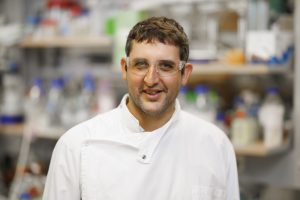
I grew up in Mexico, a place full of colour, culture and biodiversity. As a child, I was fascinated by the natural world and the resourcefulness of people with limited means. This environment nurtured my curiosity for science and showed me the value of innovation.
My work is driven by my curiosity and a genuine love for discovery. I enjoy collaborating with people from different backgrounds and have learnt to be resilient; science doesn’t often work the first time! I also care deeply about sustainability, which guides my motivation.
The RECARB Hub brings together world-class expertise to tackle some of society’s greatest challenges. Climate change is an urgent problem, so having the chance to combine fundamental science with industry is amazing.
Synthetic biology is endlessly creative. It allows us to redesign microbes and imagine new ways to solve big problems. I love how it blends science and engineering with imagination.
Outside of work, spending time with my family helps me disconnect and recharge. I enjoy playing soccer with my son, being outdoors and cooking at home. These simple activities keep me grounded and give me balance.
Esteban’s top tip
Collaboration is critical; working with others opens opportunities and makes the journey more rewarding.
Meet Chris
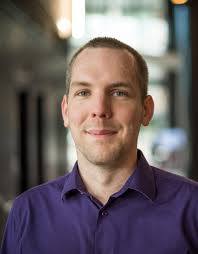
As a teenager, I never imagined becoming a scientist. I came from a difficult home and had zero self-esteem. I was more interested in the arts than science, but I took a science degree because I thought the job prospects were better. It wasn’t until my PhD that I realised how creative science really is.
Meeting my mentor was a big turning point. Professor Greg Cook believed in me before I believed in myself; he helped me see my strengths and showed me that science is about discovery and using knowledge to make a difference. I still remember the thrill of my first discoveries.
I thrive on variety. With the support of an amazing team, I’m constantly working across different research areas. I love connecting with people and fields in unexpected ways, and I try to pass on what my mentor did for me: finding talented people from less privileged backgrounds and helping them grow into future leaders.
The RECARB Hub is a partnership between academia and industry. This enables us to use these gas-munching microbes for practical solutions – a direct path for turning scientific innovations into real-world impact.
I don’t work long hours, but when I’m on, I’m on. Outside of work, I’m normally found outdoors, hiking, cycling, travelling or being walked by my dogs. Indoors, I love watching films and escaping to fantasy worlds through Japanese video games. A mix of hobbies and an effective work-life balance helps me cope, and often thrive, with ADHD.
Focus on honing your strengths and don’t compare yourself to others. Try to believe in yourself, and if that feels hard, seek mentors who can help you get there.
Meet Leonie
In high school, I was mostly interested in chemistry and physics. Outside of the classroom, I was engaged in music and dancing. I think the combination of scientific and creative interests helps make innovative links in my work.
I studied molecular life sciences in the Netherlands. Since then, I’ve had the opportunity to work in Switzerland and Australia. These decisions felt like big leaps at the time, but I’m grateful I took them – they made me who I am today!
I am highly determined and passionate about nurturing a positive team environment. I aim to empower my team members to be the best versions of themselves and to help each other out. The RECARB Hub enables a collaborative and interdisciplinary team environment, reaching far beyond what we can do in our individual labs.
All of my work focuses on contributing to the United Nations Sustainable Development Goals. By aiming for goals, such as zero hunger and responsible consumption, through working with communities and industry stakeholders, we can create a positive impact. I try to bridge the gap between new developments in the sector and educating new talent.
To reset, I love rowing, yoga, hiking and biking – anything out in nature! My passion for the natural world is my driving force for working in the area of sustainable processing.
Leonie’s top tip
Be curious about the world around you and how you can use curiosity to create new solutions that contribute to mitigating climate change and protecting nature for current and future generations.
Do you have a question for Caroline or Sarah?
Write it in the comments box below and they will get back to you. (Remember, researchers are very busy people, so you may have to wait a few days.)
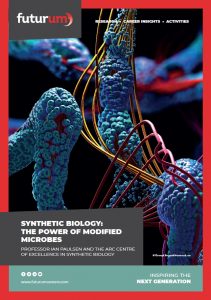
Learn more about synthetic biology and the power of bioengineered microbes:
futurumcareers.com/synthetic-biology-the-power-of-modified-microbes

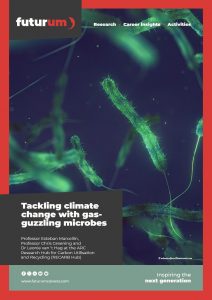
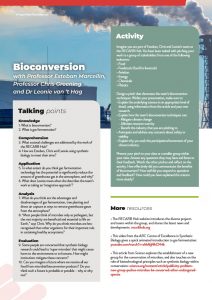
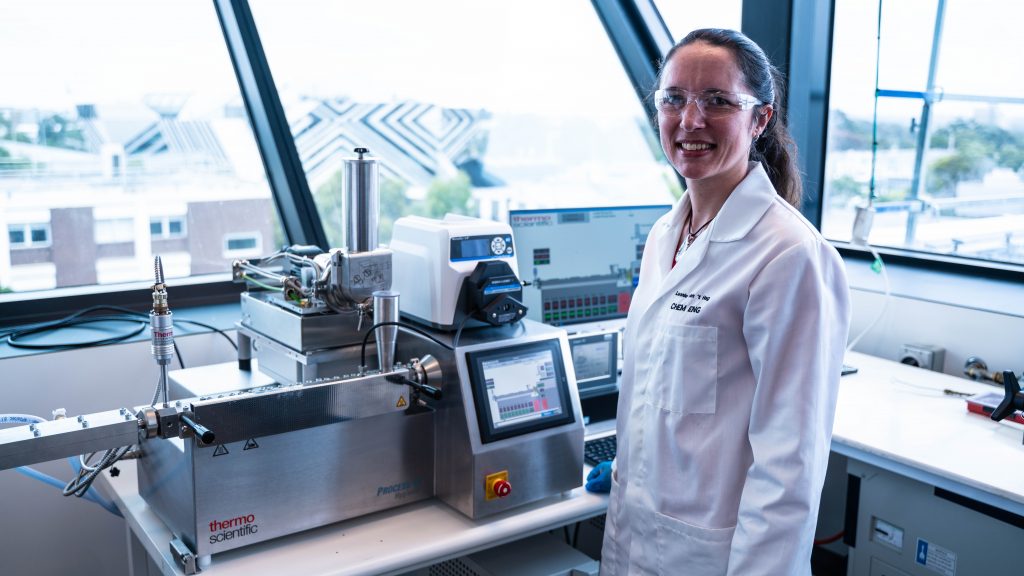
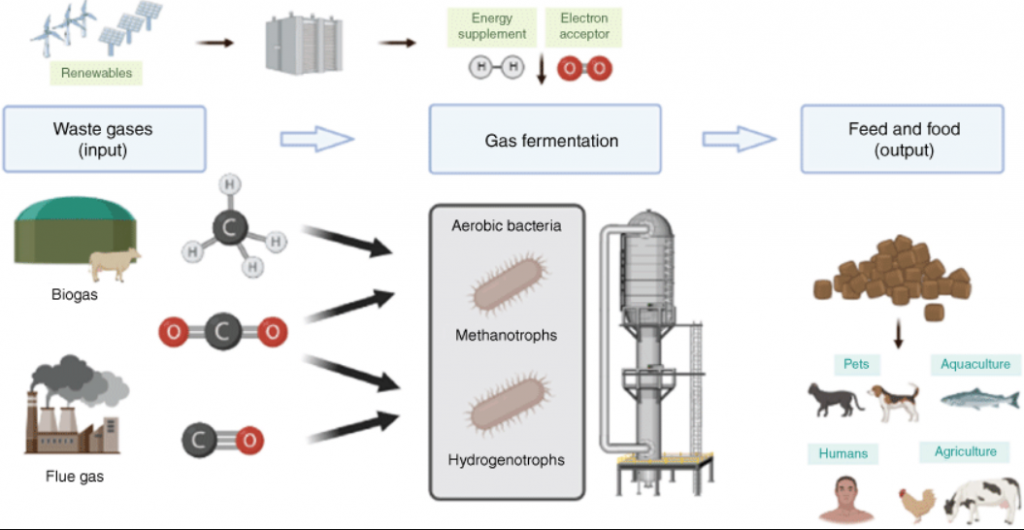
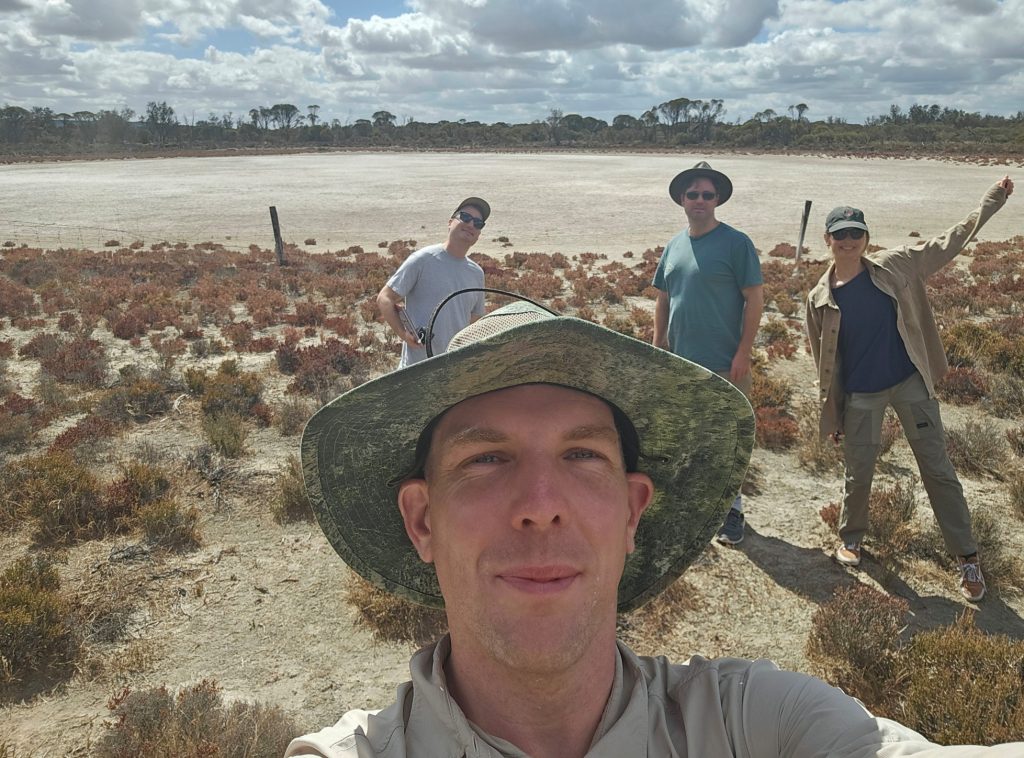
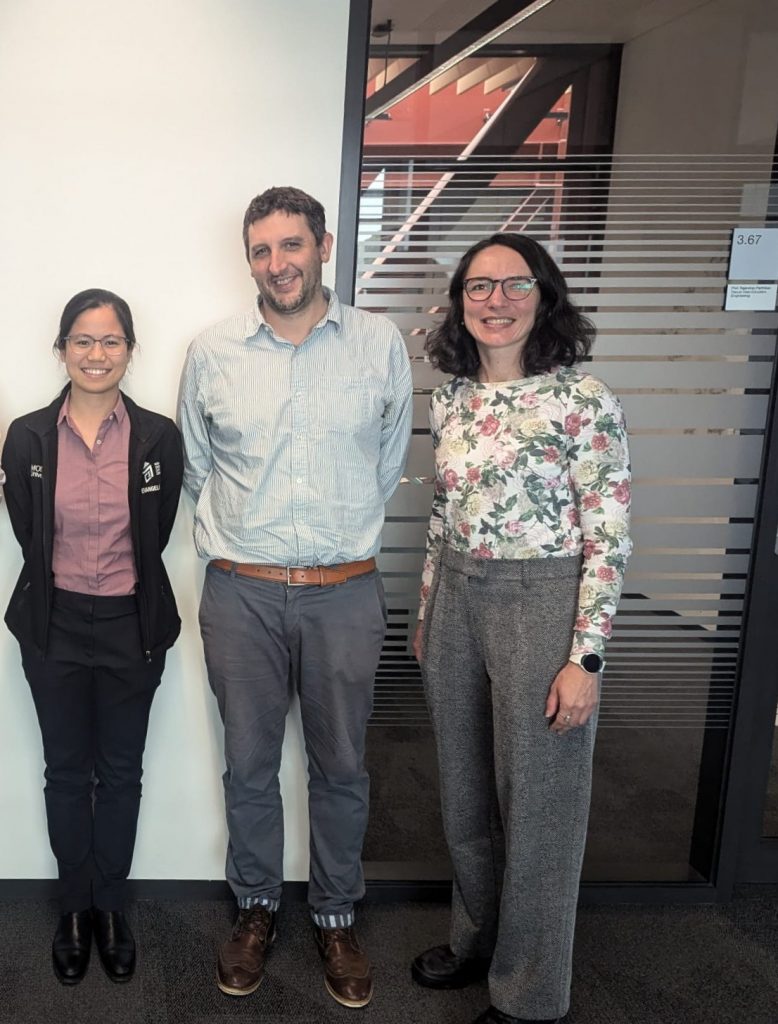
0 Comments